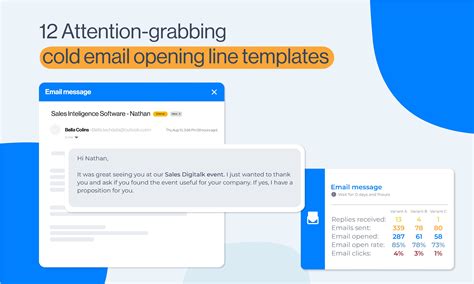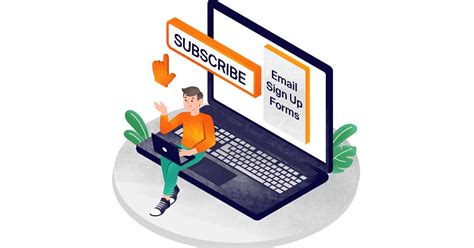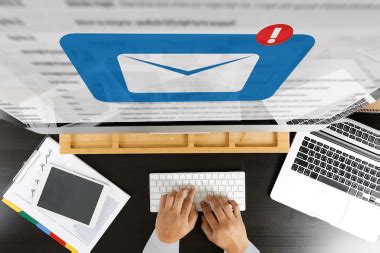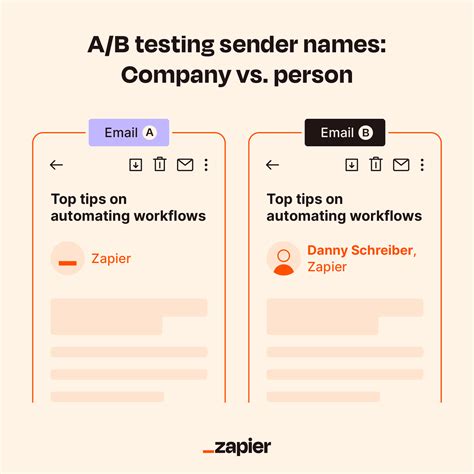With the ever-evolving digital landscape, it has become imperative for businesses to stay ahead of the competition by establishing a strong online presence. Among the plethora of marketing tactics available, email advertising continues to reign as one of the most influential and cost-effective methods to engage with your target audience.
However, merely crafting captivating subject lines and visually appealing designs may not yield the desired results. To truly boost the effectiveness of your email campaigns, it is essential to focus on implementing innovative strategies that captivate your recipients, encourage their active participation, and ultimately drive conversions.
Outlined below is a comprehensive guide that explores various techniques and approaches to optimize the outcome of your email marketing endeavors, helping you to establish a trusted relationship with your subscribers and maximize the returns on your investment.
Key Elements of a Successful Email Marketing Strategy
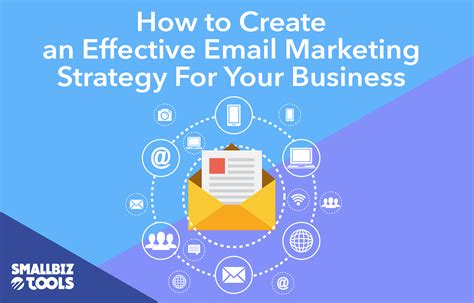
When it comes to crafting an effective email marketing campaign, there are several essential elements that can contribute to its success. These key components play a crucial role in ensuring that your emails are engaging, impactful, and yield desired results.
- Compelling Subject Lines:
- Targeted Audience Segmentation:
- High-Quality Content:
- Mobile-Optimized Design:
- Clear Call to Action:
- Testing and Analyzing:
- Automation and Personalization:
- Effective List Management:
A captivating subject line is the first point of contact between your email and your audience. It needs to be concise, personalized, and intriguing enough to entice recipients to open the email.
Segmentation allows you to divide your subscriber list into smaller, more specific groups based on demographics, behavior, or preferences. By tailoring your content to each segment, you can deliver more relevant and personalized messages.
The content of your emails should be well-crafted, informative, and valuable to your subscribers. Incorporate compelling visuals, persuasive copy, and relevant calls to action to engage readers and encourage conversions.
In today's mobile-centric world, it is essential to ensure that your email campaigns are optimized for various devices. Use responsive design techniques to ensure that your emails are readable and visually appealing across all screens.
A clear and prominent call to action is crucial for driving desired actions from your subscribers. Whether it's making a purchase, signing up for an event, or subscribing to a newsletter, make the call to action stand out and easy to follow.
Regularly testing different elements of your email campaigns, such as subject lines, content formats, and send times, allows you to refine your approach and optimize results. Use analytics tools to gather data and insights to make informed decisions.
Utilize email automation and personalization tools to enhance the relevance and timeliness of your campaigns. Automated workflows and personalized content based on subscriber behavior can significantly boost engagement and conversions.
Maintaining a clean and updated subscriber list is crucial for the success of your email marketing campaigns. Regularly remove inactive subscribers, honor opt-out requests promptly, and implement a robust email verification process.
By incorporating these key elements into your email marketing strategy, you can significantly enhance the effectiveness and impact of your campaigns. Remember, each element plays a vital role in attracting, engaging, and converting your subscribers, ultimately leading to the success of your email marketing efforts.
Building a Relevant and Engaged Subscriber List
Creating a strong and active subscriber list forms the foundation of a successful email marketing campaign. Building a list of subscribers who are genuinely interested in your brand and content is essential to ensure the relevance and engagement of your email campaigns.
Here are some effective strategies to help you build a high-quality subscriber list:
- Define your target audience: Before you begin collecting subscribers, it's crucial to identify your target audience. Understanding their demographics, interests, and needs will allow you to create relevant and personalized email content that resonates with them.
- Create compelling opt-in incentives: Entice potential subscribers to join your list by offering valuable opt-in incentives. This could be in the form of exclusive content, discounts, freebies, or access to member-only events or webinars.
- Optimize your sign-up forms: Keep your sign-up forms simple, user-friendly, and visually appealing. Place them strategically on your website, blog posts, and social media channels to capture the attention of your target audience. Only ask for essential information to minimize friction and increase conversion rates.
- Implement double opt-in: Use a double opt-in process to verify the legitimacy of subscribers and ensure they genuinely want to receive your emails. This helps to maintain a clean and engaged subscriber list, reducing the likelihood of spam complaints and improving deliverability rates.
- Segment your subscribers: Divide your subscriber list into specific segments based on their preferences, behavior, or demographics. Segmenting allows you to send highly targeted emails, increasing relevancy and engagement. Personalized emails have higher open and click-through rates.
- Encourage social sharing and referrals: Incorporate social sharing buttons in your emails to encourage subscribers to share your content with their networks. Additionally, implement a referral program where existing subscribers are rewarded for referring new subscribers, expanding your reach organically.
- Provide valuable and consistent content: To keep your subscribers engaged, consistently deliver valuable content that aligns with their interests and needs. Incorporate a mix of informative, entertaining, and promotional content to maintain a healthy balance and avoid being overly sales-oriented.
- Monitor and analyze data: Pay close attention to your email marketing metrics to understand what resonates with your subscribers. Monitor open rates, click-through rates, and unsubscribe rates to identify areas of improvement and refine your email campaigns accordingly.
By following these strategies, you can ensure that your email marketing campaigns are targeted, engaging, and relevant, resulting in higher open rates, click-through rates, and ultimately, conversions.
Crafting Irresistible Subject Lines and Preheaders: The Key to Engaging Email Marketing
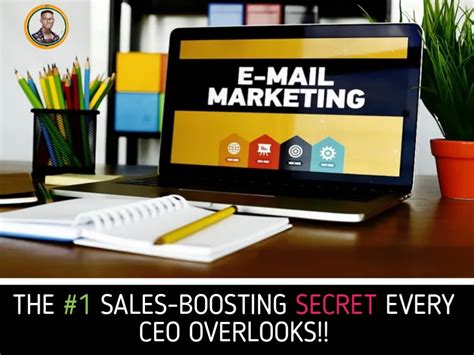
When it comes to email marketing, a well-crafted subject line and preheader can make all the difference in capturing the attention of your audience. These two crucial elements are your first and sometimes only chance to entice recipients to open your email and engage with your content. With countless emails flooding inboxes, it is essential to develop subject lines and preheaders that stand out and compel recipients to take action. In this section, we will explore effective techniques and strategies for crafting compelling subject lines and preheaders that will significantly impact the success of your email campaigns.
The Power of Personalization: One of the most impactful ways to grab your recipient's attention is by personalizing your subject lines and preheaders. Addressing recipients by name or tailoring the content to their specific interests shows that you value their individuality, making it more likely for them to open the email. Incorporate personalization techniques that suit your target audience and align with your brand's tone and voice.
The Art of Curiosity: Creating a sense of curiosity in your subject lines and preheaders can generate intrigue and encourage recipients to click open. Utilize words or phrases that pique curiosity or hint at valuable information that awaits them inside the email. However, strike a balance between curiosity and clarity to ensure that the recipient understands the context without feeling misled.
The Importance of Clarity: While curiosity is vital, clarity should not be compromised. Clearly communicate the content or benefit that the email offers to capture the recipient's interest and convey the value they will gain by opening it. Be concise and straightforward, avoiding excessive use of jargon or lengthy explanations.
The Role of Urgency: Incorporating a sense of urgency into your subject lines and preheaders can create a fear of missing out (FOMO) effect, encouraging recipients to act promptly. Highlight limited-time offers, upcoming deadlines, or exclusive promotions to instill a sense of urgency and drive immediate action.
The Influence of Emotional Appeal: Appeals to emotions can be highly effective in capturing attention and generating engagement. Invoke emotions such as excitement, curiosity, or even a touch of nostalgia in your subject lines and preheaders. However, ensure that the emotional appeal aligns with your brand and resonates with your target audience.
When crafting compelling subject lines and preheaders, remember to test various approaches, analyze the results, and adapt based on the data. A strategic and thoughtful approach to these key elements of email marketing will help you maximize open rates, engage your audience, and achieve the desired conversions that contribute to the success of your campaigns.
Creating Mobile-Friendly and Responsive Email Templates
As mobile devices have become increasingly popular for accessing emails, it is crucial for businesses to design mobile-friendly and responsive email templates. In this section, we will explore effective techniques and strategies to optimize your email templates for mobile devices, ensuring that your emails are visually appealing and provide a seamless experience to your subscribers.
1. Consider Mobile Users: With a significant portion of your subscribers accessing emails through mobile devices, it is essential to prioritize their experience. Optimize your email templates by employing responsive design techniques that automatically adapt to different screen sizes and orientations. This ensures that your emails are legible and visually engaging, regardless of the device used.
2. Keep It Simple: Mobile screens are smaller compared to desktop screens, so it is crucial to keep your email templates simple and easy to navigate. Use a clean and minimalist design, focusing on a single column layout with clear and concise content. Avoid clutter and make sure your call-to-action buttons are prominent and easy to tap on smaller screens.
3. Font and Text Size: Choose fonts that are visually appealing and easily readable on mobile devices. Opt for sans-serif fonts, such as Arial or Verdana, and maintain a font size of at least 14 pixels to ensure clarity. Avoid using small fonts or long paragraphs, as they can make reading difficult on smaller screens.
4. Optimize Images: While visuals can enhance the overall appearance of your email templates, be mindful of their impact on loading times and responsiveness. Optimize images by using the appropriate file formats, such as JPEG or PNG, and compress them to reduce file size without compromising quality. Consider using responsive images that can automatically resize based on the device's screen dimensions.
5. Test Across Devices and Email Clients: To ensure that your email templates render correctly on various mobile devices and email clients, it is vital to conduct thorough testing. Use testing tools and services to preview your emails across different screen sizes, devices, and email clients. This allows you to identify and address any issues or inconsistencies that may arise.
6. Personalization and Localization: Personalizing your email templates based on subscriber preferences and localization can significantly improve engagement and response rates. Segment your subscriber list based on demographics, interests, or behavior, and tailor your email content accordingly. This level of personalization makes your emails more relevant and increases the likelihood of conversion.
By designing mobile-friendly and responsive email templates, you optimize your email marketing campaigns for the growing number of mobile users. Implement these tips to ensure your emails deliver a consistent and visually appealing experience, regardless of the device your subscribers use.
Personalization and Segmentation: Elevating Conversion Rates
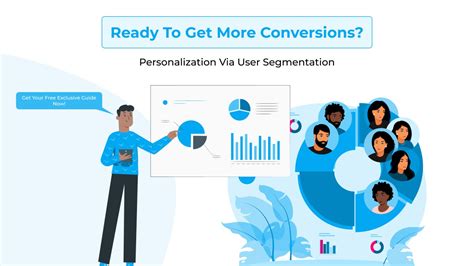
Tailoring your email marketing campaigns to speak directly to your audience can result in higher conversion rates and ultimately, greater success for your business. By implementing personalization and segmentation strategies, you can engage your subscribers on a more individual level, increasing their likelihood of taking the desired action.
Personalization involves customizing your emails to address each recipient by their name, preferences, and past interactions with your brand. This approach creates a sense of familiarity and connection, making your subscribers feel valued and understood. It allows you to deliver content that is highly relevant to each individual, increasing the chances of conversion.
Segmentation takes personalization a step further by dividing your email list into smaller, more targeted groups based on specific criteria such as demographics, behavior, or purchase history. This enables you to send tailored messages that resonate with each segment's unique interests and needs. By delivering content that directly aligns with their preferences, you can enhance engagement and drive conversions.
- Create Detailed Customer Personas: Develop comprehensive profiles of your ideal customers, taking into account their demographics, interests, pain points, and purchasing behaviors. This will help you better understand their needs and tailor your emails accordingly.
- Use Dynamic Content: Utilize dynamic content within your emails to automatically insert personalized elements, such as the recipient's name, location, or recent purchase. This level of customization can significantly improve engagement and conversion rates.
- Implement Behavioral Triggers: Set up automated email triggers based on specific actions or behaviors exhibited by your subscribers. This could include abandoned cart reminders, personalized product recommendations, or re-engagement campaigns based on inactivity.
- Segment Based on Engagement Levels: Divide your email list into segments based on engagement levels, such as active subscribers, inactive subscribers, and brand advocates. Tailor your messaging to re-engage inactive subscribers or reward loyal customers with exclusive offers.
- A/B Test Your Personalization Efforts: Continuously test different personalization techniques to identify what resonates best with your audience. Experiment with subject lines, email layouts, and personalized content variations to optimize your conversion rates.
Personalization and segmentation are powerful strategies that can significantly impact the success of your email marketing campaigns. By treating each subscriber as an individual and delivering content that is tailored to their preferences and behaviors, you can increase engagement, drive conversions, and foster long-lasting customer relationships.
FAQ
How can I improve the open rate of my email marketing campaigns?
One effective way to improve the open rate of your email marketing campaigns is to craft compelling subject lines that create curiosity or provide value to the readers. Additionally, segmenting your email list and personalizing the content according to each segment's interests can also increase the chances of your emails being opened.
What are some tips to enhance the click-through rate in email marketing campaigns?
To enhance the click-through rate in email marketing campaigns, you can start by optimizing the layout and design of your email templates to make them more visually appealing and easy to navigate. Adding prominent and clear call-to-action buttons, using eye-catching graphics, and including personalized content that matches the interests of your target audience are also effective strategies.
How can I reduce the number of unsubscribers from my email list?
To reduce the number of unsubscribers from your email list, it is crucial to consistently provide valuable content to your subscribers. By sending relevant and engaging emails that fulfill their interests and needs, you can keep them interested and less likely to unsubscribe. Additionally, giving them the option to customize the frequency and type of emails they receive can also help retain subscribers.
What are some best practices for email automation in marketing campaigns?
When implementing email automation in marketing campaigns, it is important to start by defining clear goals and objectives for each automated email. By mapping out the customer journey and identifying the appropriate triggers and actions, you can send timely and relevant emails to your subscribers. It is also crucial to regularly analyze and optimize the automated campaigns to ensure they are effective in achieving your desired results.

